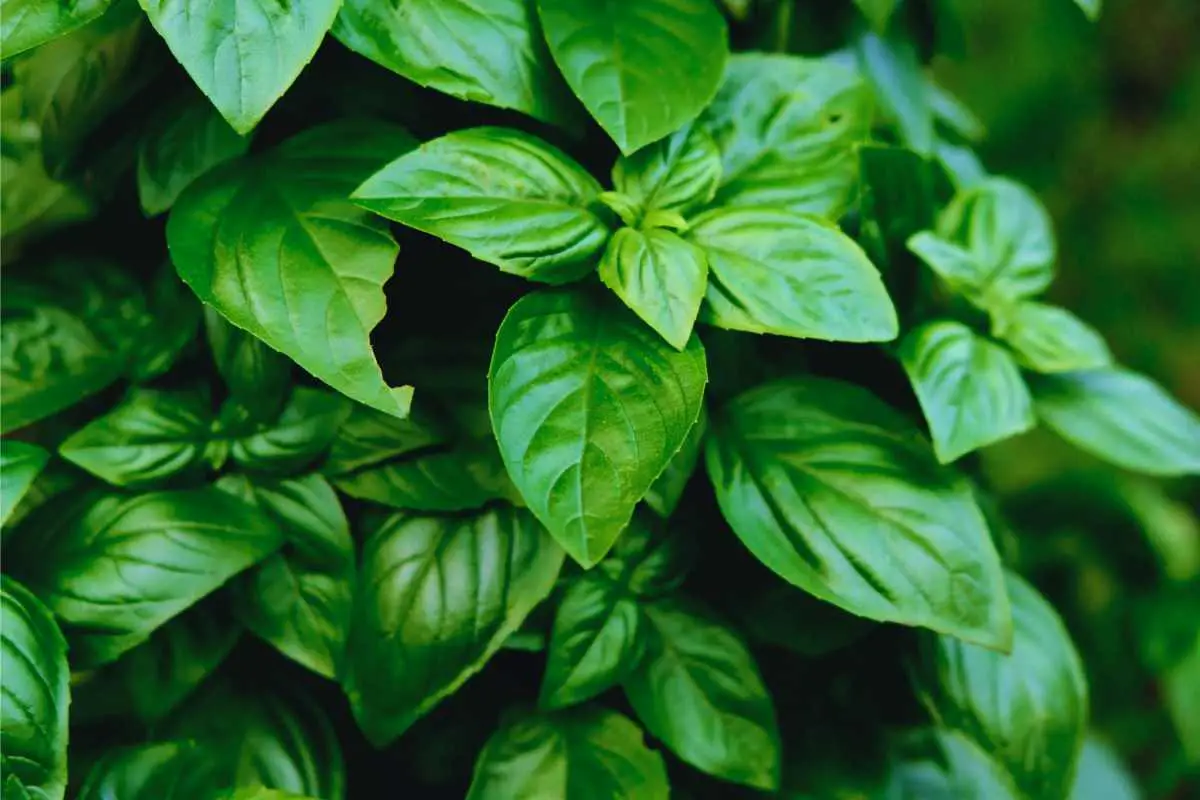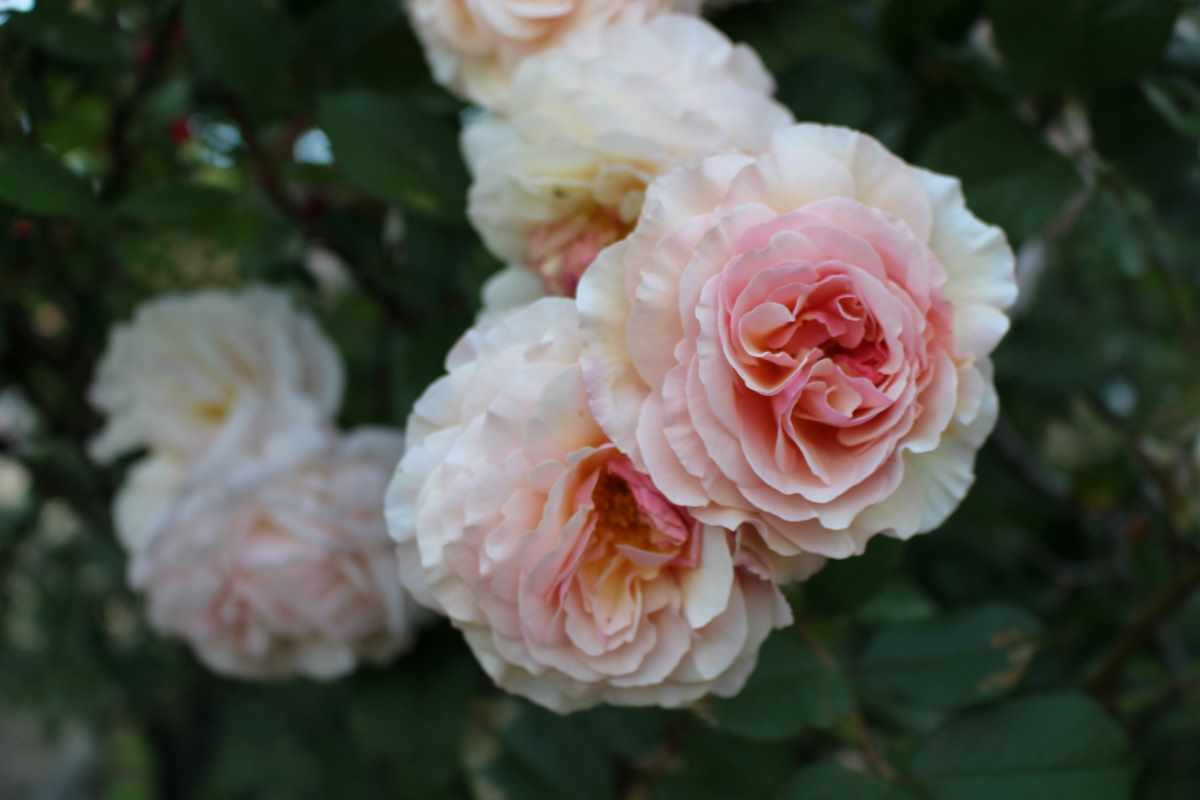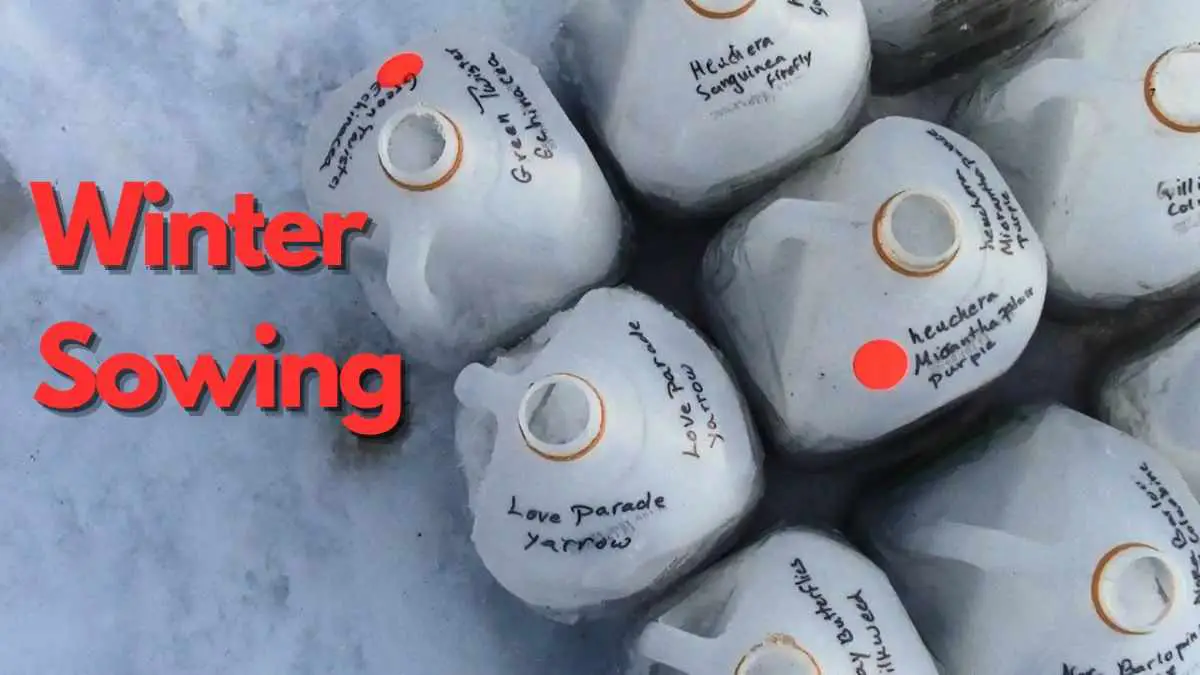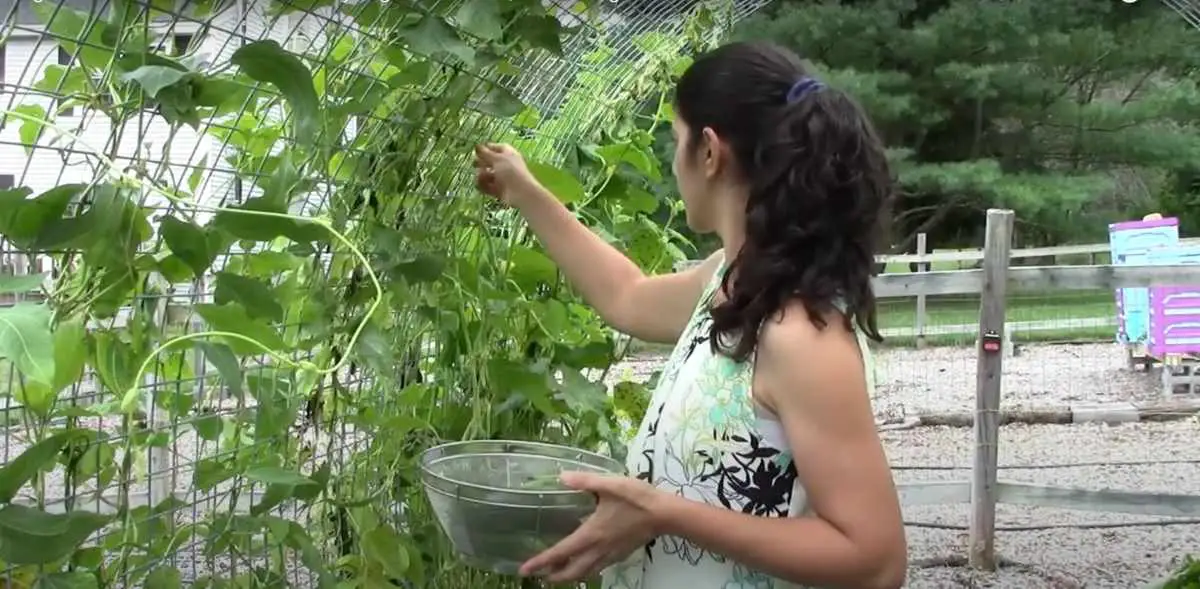Learn how to grow basil in this step-by-step guide. Basil is one of my most used herbs in the kitchen. it has vast culinary uses such as drinks, stews, baked goods, and all sorts of other applications.
This step-by-step guide will walk you through all the details that you need know on how to grow basil.
Basil Varieties
Basil comes in an assortment of varieties, but the most common variety is Sweet Basil. Sweet basil is used mostly in the kitchen especially in Italian food, but there are many different varieties of Basil such as purple Basil, Thai basil, lemon basil, spicy Bush basil, big leaf basil…
So before you plant your basil, choose the variety that suits your uses best. Each variety has a different flavor profile. To know which variety to choose some research is required.
Watch How To Grow Basil
Using Basil In The Landscape
Basil can also be used as an accent plant in the garden. One of my favorite varieties to plant in the garden is purple basil. Another beautiful variety is the Thai basil. Thai Basil produces dainty purple flowers and it has elongated leaves. It has a spicy flavor and a hint of anise.
Use Basil in the garden to provide a pop of color and to act as a filler in areas where you may need some extra plants.

How To Grow Basil From Seed
To start basil from seed you’ll need seed starting trays, seed starting mix, basil seeds, and water.
when you are starting plants from seed you’ll want to start them in small cell trays to prevent dampening off. A large container will hold on to moisture for too long, causing the seedlings to rot at the base which is know as dampening off.
The only exception to starting seeds in a large container is if you are starting several seeds in the same cell. In that case, the many seedlings will absorb moisture much quicker than one seedling, in effect eliminating the danger of dampening off.
Even though basil loves water, In its early stages, it is prone to dampening off.
Preparing The Seed Starting Mix
When starting seeds, you should always use a lofty seed starting mix that has good organic matter.
A seed starting mix is a lot lighter and much less dense than potting mix, or outdoor soil which makes it ideal for seed starting. Because of its lower density and light mass, it allows the seeds to germinate much easier than its counterparts.
Outdoor soil can carry pests and diseases and is not recommended for seed starting indoors. It also contains numerous amounts of foreign seeds. If you are new to seed starting, it will make it almost impossible for you to recognize the seeds you planted vs the weeds that just sprouted.
I highly recommend choosing a good variety of seed starting mix. This is one of my favorite seed starting mixes. A good variety can make or brake your seedlings. If your seedlings look all stunted and yellow, your seed starting mix can very well be the culprit behind this matter.
Always moisten your seed starting mix before adding it to the seed starting trays. A good indicator of well moistened seed starting mix is that it will hold together when squished firmly, but should not drip with excess water.

How To Plant Basil Seeds
Basil seeds are super tiny. They should not be covered more than 1/8″ to 1/4″ of soil.
The general rule of planting any seed is to cover it twice as deep as it it is wide.
Cover the seeds with a very thin layer of vermiculite. Vermiculite will retain moisture and minimize the chance of the seeds drying out. It will also minimize algae growth.
Regularly mist the seeds using a pump mister to prevent from drying. Do not use a watering can to water your seeds because it will dislodge them. If your seed starting tray comes with a dome, cover it with the dome until the seeds germinate. The dome will maintain moisture levels for a good period of time.
It is essential to keep the seeds moist until they germinate, otherwise they will dry out and die.
What Temperature Does Basil Need To Germinate?
Basil likes to germinate at about 70 to 80° F. If your temperatures are colder than that, you can use a heat mat to encourage germination. Once the basil germinates, take it off the heat mat.
Keeping your basil on the heat mat after it has fully germinated will cause it to have spindly and elongated stems.
Necessary Lighting For Growing Basil Indoors
You can place your basil in a sunny location in your home where it can receive 6 hours or more of direct sunlight. If you do not have that, you can create your own grow light system. You can check out how to make it in How To Start Seeds Indoors.
Basil needs 8 to 12 hours of sunlight to grow well.

Fertilizing Your Basil
Once your basil has developed its first true leaves, not the first two leaves that it sprouted with, you can begin to fertilize it.
Fertilizing young plants is a delicate matter. Too much fertilizer can burn them, even if it was an organic fertilizer.
When your basil is still in its early stages, cut the recommended dosage in half, mix it in the recommended amount of water, and do not allow the fertilizer to touch the leaves as it can burn them.
This is my preferred organic indoor fertilizer. It has low odor and great effect on the plants.
To ensure the maximum health for your seedlings, water them with a liquid fertilizer once every week or every two weeks.
After Your basil plants have put on about 5 to 8 leaves, you can begin to fertilize them with the full recommended dosage.
When To Transplant Basil
After your seedlings have outgrown their cell trays, they will need to be transplanted into bigger containers. A 3″ x 3″ container is ideal for this application.
You can tell that a plant is ready to be transplanted by looking at the roots. When the roots begin to exit the bottom drainage holes, and fill-out the cell tray, then you’ll know that it is time to transplant.
To transplant, Fill the container with potting soil, not seed starting mix, create a hole wide and deep enough for the seedling, place it into the hole, and cover it with soil only to the level that it was planted at. Do not burry the stem, or it may cause rot.

How To Grow Bushy Basil
Your basil might look very spindly in the beginning, but if you want bushy and robust basil, you’ll have to do this old-time trick known as pinching.
Pinching basil is the ultimate and only method, along with good soil and organic matter, that will give you bushy basil.
To pinch your basil, snip the top of each stem as far down as you wish, as long as there are leaves under the place where you decide to snip the stem. You can either use your fingernails, or scissors to do so. Make the snip about 1/4 inch above two sets of leaves.
As your basil grows, continue to pinch it. Enjoy the newly pinch basil in drinks and various recipes.
This pinching process allows two new stems to develop right under the place where you pinched it.

Transplanting Basil To The Outdoors
If you have been growing your basil indoors, before you can transplant it outdoors you have to harden it off.
Hardening off is the process of getting a plant acclimated to its new growing conditions. If you take your basil plant from indoors and directly plant it outdoors, your plant will go through a serious shock, and it might even die.
To prevent this tragedy, you’ll need to harden it off.
To harden off your basil plant, wait until the weather is ideal for planting outdoors and all danger of frost is gone. The outdoor temperature should be between 60 and 70, or above, and the soil temperature should be between 70 and 80. You can test the soil temperature using a soil thermometer.
Once the growing conditions are ideal, place your plant outdoors on the first day in a shady location for 2 to 3 hours. The next day, move it to a slightly more sunny location for around the same time.
Keep increasing the sun intensity, and the amount of time spent outside for the plant, daily, and gradually; About 2 to 3 additional hours each day until the plant is able to stay outdoors for the entire length of day.
Once that happens, your plant is then ready to be transplanted into the ground. Choose a full sun location where it can receive 8 to 12 hours of sunlight.
Basil’s Ideal Growing Conditions
Basil is a Mediterranean plant, so it likes to be in a warm environment.
Basil can be a perennial from zone 9 to 11 depending on the variety.
When temperatures exceed 90 F your basil may begin to bolt. Bolting is a plants response to stress causing it to go in a seed production mode. When basil begins to flower its flavor becomes more spicy and less appealing.
To prevent your basil from bolting and becoming spicy, continue pinching it regularly. Pinching will help it maintain its delicious flavor.
How To Preserve Basil
There are 3 main methods to preserving basil. Freeze drying, dehydrating, and freezing.
My favorite two are freeze drying, and freezing.
Freeze Drying Basil
While dehydrating is a cheap and easy method, it does not preserve the flavor and color as freeze drying does. freeze drying is one of the best methods to preserving herbs because it preserves both color and flavor as if it was harvested right then and now.
If you grow most a lot of produce and wonder what to do with it, having a freeze dryer will save you the headache, and it is absolutely worth the investment.
Once you freeze dry your basil, place it either in mylar bags with oxygen absorbers and silica gel packets, or in mason jars. If you are going to use it away, you can place it in a mason jar and vacuum seal it.
Dehydrating Basil
Dehydrating can be done both in a dehydrator, and by hanging the plants in bunches, upside down. This allows the moisture to escape slowly causing more of the oils and flavors to remain in the leaves. It is one of the simplest methods used for centuries in preserving herbs.

Freezing Basil
The last method which is freezing is wonderful as well. However, the basil has to be placed in oil in order to preserve it properly in the freezer.
One of the easiest method of freezing basil, is to chop it up, place it in ice cubes, and submerge it with extra virgin olive oil. Once frozen, pop it out of the ice cube tray and store it in a resealable bag. The size is perfect for using directly in meals. And the flavor is almost fresh.
Another method for freezing basil is to turn it into Pesto, place it in a mason jar leaving about 1 to 2 inches of head space, and freeze it. You can follow the Pesto Recipe on my blog for a great pesto.
How To Grow Basil – Common Pests and Diseases
This article from Cornell University lists a variety of different diseases that basil faces. Some of the diseases listed are powdery mildew, Downey mildew, sporangia bacterial leaf spot, basil shoot blight along with many others.
Some may recommend fungicides to combat such diseases, but I personally am against the use of fungicides as they can be harmful to pollinators and to good soil born funguses.
However, there are organic fungicides that can be used but with caution such as baking soda. Here is an article from Purdue University that lists the use of organic pesticides and fungicides.
Maintaining a healthy soil is your ultimate weapon against pests and diseases. Healthy soil will give you a healthy plant that is less attractive to insects. A healthy soil consists of plenty of organic matter.
If you happen to experience any of these diseases listed in the article with your basil, implementing a rotational system for planting will be helpful. This means, you will need to plant your basil in a different location the following year. You may need to continue with this rotational system up to 5 years until the problem is gone.
Pin This Post!

More Gardening and Recipe Related Topics
Gardening
How To Grow Carrots From Seed To Harvest
Recipes
Beef Carnitas That Will Knock Your Socks Off
How TO Cook Bok Choy – From Farm To Table
Shop This Post
Tell Us What You Think!
Growing basil is an easy and rewarding venture. Its intoxicating aroma, flavor, and beauty beckons you to plant it. Whether you are a beginning gardener or an experienced gardener, basil is a must in the garden. It is also a great companion plant because of its great ability to repel pests.
Is this your first time growing basil? Let us know if you have any comments or questions down in the comment section below.





Be the first to reply